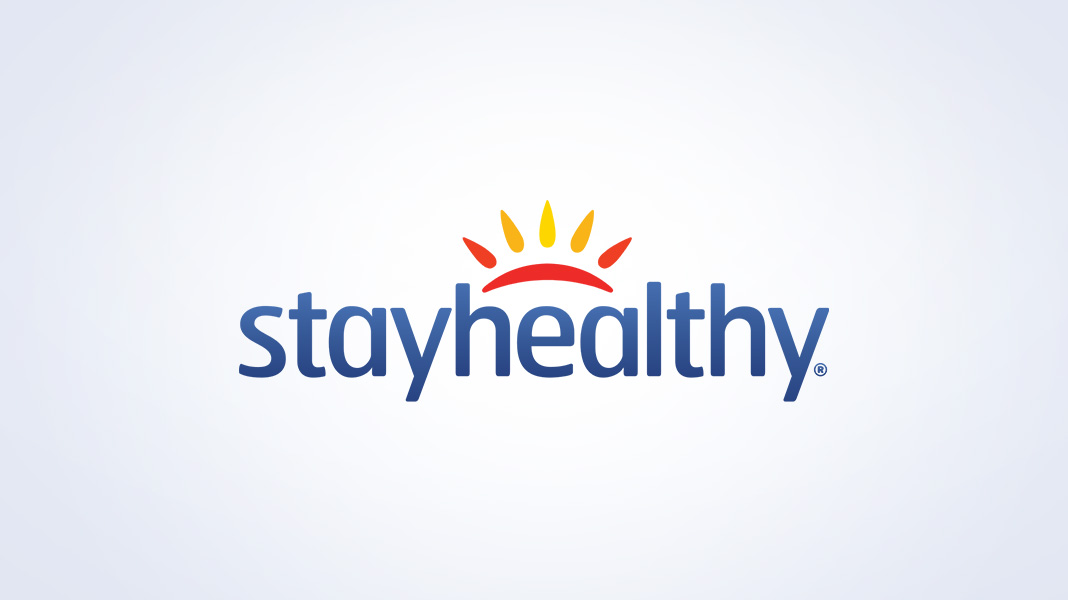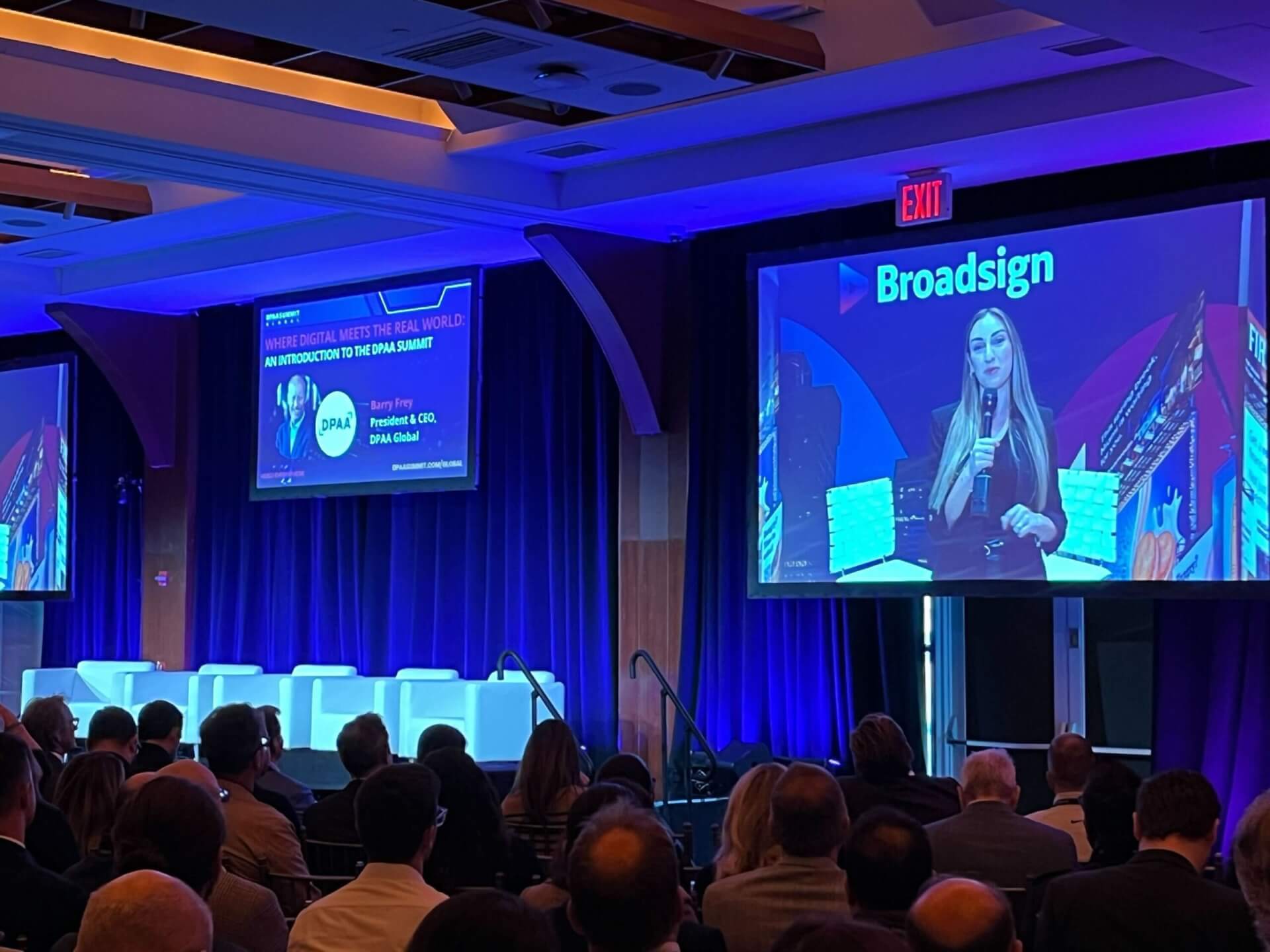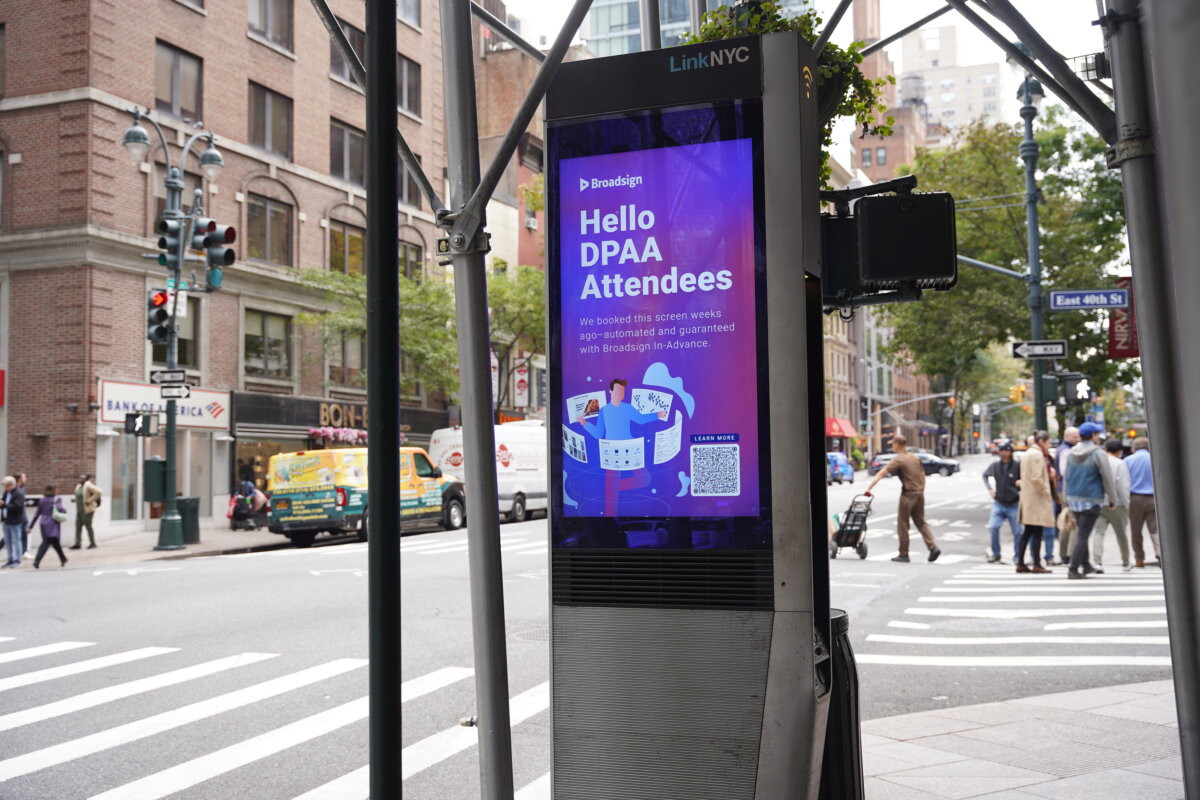| October 11, 2021
Stayhealthy, Inc. Selects Broadsign International, LLC in Strategic Alliance to Deploy its HealthCENTER Kiosk Network Nationwide
Initial deployment across all Kroger® stores with pharmacies to be followed by expansion to other major retail chains.
MONTREAL, CANADA. April 30, 2013 – Health solutions provider Stayhealthy, Inc. has selected Broadsign International, LLC as its digital signage software provider for deployment of its network of HealthCENTER kiosks across the United States. The initial, completed deployment of approximately 2,000 kiosks includes Kroger grocery stores where the self-service, health screening kiosks are situated in waiting areas of in-store pharmacies.
The plug-and-play kiosks are FDA-cleared and offer convenient, easy-to-use, clinical-grade health screenings. Consumers can measure key health indicators including blood pressure, heart rate, total body weight, total body composition (lean mass, body fat, hydration index), vision (color blindness) and BMI. Consumers may also upload personal blood glucose meter and activity monitor data to track their personal results over time to assist in improving health.
Stayhealthy’s new generation of health screening kiosks are the nation’s first and currently only available platform that connects health screening kiosks with Class II medical devices and digital activity monitors united by a secure, HIPAA-compliant online portal installed in over 3,000 professional, medical offices involved in wellness and weight loss programs around the world.
The deployment of the Stayhealthy® HealthCENTER Kiosk Network™ offers consumers the convenience of accurate, self-service measuring of key health indicators at no charge as they shop. Users may also register at the kiosk and receive access to their own personal, Stayhealthy online health record account (Stayhealthy® Dashboard™) to automatically track and monitor their results from any web access location, 24/7.
“With access to affordable healthcare remaining a challenge for a large portion of the population, Stayhealthy is addressing the need by offering an easy-to-use and convenient solution,” stated John Collins, chief executive officer of Stayhealthy, “to empower and engage consumers to securely and accurately measure and monitor key health indicators to improve their health. We are excited to engage Broadsign as our premier platform provider to manage both our rapid content deployment and complex network operations. We appreciate that Broadsign brings robust functionality, flexibility and support to Stayhealthy’s HealthCENTER Kiosk Network™.”
Stayhealthy’s primary mission is to increase consumer access to convenient and accurate health screenings and solutions. Employers, provider groups and public health organizations share a vested interest in connecting with these communities. The Stayhealthy network of health screening kiosks will be funded in part by revenues received from digital advertising and health-related messaging played on the touchscreen and, optional, 32-inch HD LCD display while consumers wait between health screenings. This dwell time offers opportunities for marketers, especially those in health categories, to participate.
“We are very pleased that Broadsign was selected as the digital signage engine for the Stayhealthy® HealthCENTER Network™,” noted Skip Beloff, Broadsign’s vice president of sales. “Our track record demonstrates that Broadsign is a safe bet when it comes to network uptime, maximum automation and the ability to expand networks efficiently and effectively.”
About Broadsign International LLC
Broadsign International, LLC is the leading global provider of software-as-a-service for digital signage networks. Its software allows networks to target out-of-home audiences, place advertising or promotional campaigns, play back scheduled content on each screen and account for campaign performance. Some of the world’s largest and most successful digital signage networks run on Broadsign’s platform. They take advantage of its comprehensive functionality, reliability and virtually unlimited capacity for growing networks without adding personnel. Broadsign is consistently ranked among the top 3 global digital signage software suppliers and received the 2012 Global Growth Leadership Award in the Digital Signage Software market from Frost & Sullivan. In 2013 Broadsign expanded its portfolio by offering a fully-featured and fully-supported smart player, Broadsign Xpress. The industry-changing hardware device allows network operators to deploy digital signage at a fraction of the cost of PC-based alternatives. For more information about Broadsign, visit https://broadsign.com.
About Stayhealthy, Inc.
Stayhealthy, Inc. is a privately-owned healthcare solutions corporation headquartered in Monrovia, California. Since 1995, Stayhealthy has been committed to improving the way the world measures, manages, and accesses health and fitness. Stayhealthy has built a world-wide reputation within the research community for providing the highest-quality, FDA-cleared health measurement products, solutions, and services. Stayhealthy has deployed a nationwide network of biometric products and health screening kiosks in pharmacies, employer facilities, wellness centers, clinical, and provider sites to support public health initiatives to integrate with the healthcare community. Stayhealthy products, solutions, and services are backed by its powerful, HIPAA-compliant, online portal to empower and engage individuals, healthcare professionals and organizations across the globe to track health measurement results over time, set goals for improvement, and monitor progress.


